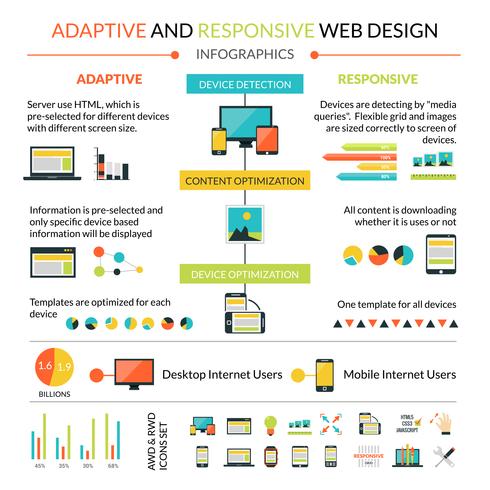Get Ready To Journey With Time And Uncover Exactly How Websites Have Come To Be Much More Innovative, Easy To Use, And Visually Spectacular
Get Ready To Journey With Time And Uncover Exactly How Websites Have Come To Be Much More Innovative, Easy To Use, And Visually Spectacular
Blog Article
Posted By-Bradshaw Peters
In the past, sites were easy and concentrated on info. Navigation was straight, and layout was for desktops. Currently, user experience is crucial. Information overviews styles for easy navigation. Receptive layouts fit various tools. Today, dark mode minimizes pressure, and minimal menus enhance navigating. Interactive features engage individuals, and vibrant visuals stick out. AI assimilation enhances involvement. See exactly how style has evolved to enhance your on the internet journey.
Very Early Days of Website Design
In the very early days of web design, simplicity reigned supreme. Web sites were fundamental, with restricted shades, fonts, and formats. The focus got on providing information instead of showy visuals. Customers accessed the web via sluggish dial-up links, so speed and capability were key.
Navigation menus were straightforward, usually situated at the top or side of the web page. Web sites were designed for computer, as mobile surfing wasn't yet widespread. Material was king, and designers focused on very easy readability over complex style elements.
HTML was the primary coding language used, and designers needed to function within its restraints. Animations and interactive features were minimal contrasted to today's criteria. Internet sites were fixed, with little dynamic web content or personalized individual experiences.
Rise of User-Focused Layout
With the development of internet site design, a change towards user-focused style concepts has actually ended up being increasingly popular. Today, producing sites that prioritize user experience is crucial for involving visitors and achieving company objectives. User-focused style involves understanding the demands, preferences, and behaviors of your target market to customize the website's layout, content, and features appropriately.
Developers currently perform complete study, such as user surveys and functionality testing, to collect insights and responses directly from individuals. This data-driven technique helps in producing intuitive navigation, clear calls-to-action, and visually enticing user interfaces that reverberate with visitors. By placing the user at the facility of the style procedure, internet sites can deliver an extra individualized and pleasurable experience.
Responsive layout has actually likewise become an essential facet of user-focused style, ensuring that websites are maximized for numerous gadgets and screen dimensions. This adaptability boosts accessibility and use, catering to the diverse methods customers interact with internet sites today. Basically, the increase of user-focused style represents a shift in the direction of producing digital experiences that prioritize the needs and expectations of completion individual.
Modern Trends in Website Design
Explore the latest trends forming web design today. One popular trend is dark setting style, providing a sleek and modern-day appearance while decreasing eye strain in low-light environments. One more vital trend is minimalist navigation, streamlining food selections and boosting individual experience by focusing on essential elements. Integrating micro-interactions, such as computer animated switches or scrolling results, can produce an extra appealing and interactive website. Responsive layout stays crucial, ensuring seamless user experiences across numerous devices. Furthermore, using bold typography and unbalanced layouts can add aesthetic passion and draw attention to particular material.
Incorporating AI innovation, like chatbots for customer assistance or personalized suggestions, enhances individual interaction and improves procedures. Access has also become a significant trend, with developers focusing on comprehensive style methods to cater to varied user requirements. Embracing sustainability by enhancing internet site efficiency for speed and efficiency is an additional arising trend in website design. source web page with individual feedback and data analytics to repeat and improve design continually is necessary for remaining relevant in the ever-evolving electronic landscape. By embracing these modern fads, you can create an aesthetically enticing, easy to use internet site that resonates with your audience.
Conclusion
As you review the evolution of website design from the early days to currently, you can see exactly how user-focused design has come to be the driving pressure behind modern-day patterns.
Welcome the trip of modification and adjustment in website design, constantly maintaining the individual experience at the center.
Tippingpointdigital
Remain present with the most up to date trends and technologies, and never stop progressing your technique to develop visually spectacular and straightforward internet sites.
Advance, adjust, and develop - the future of web design remains in your hands.
